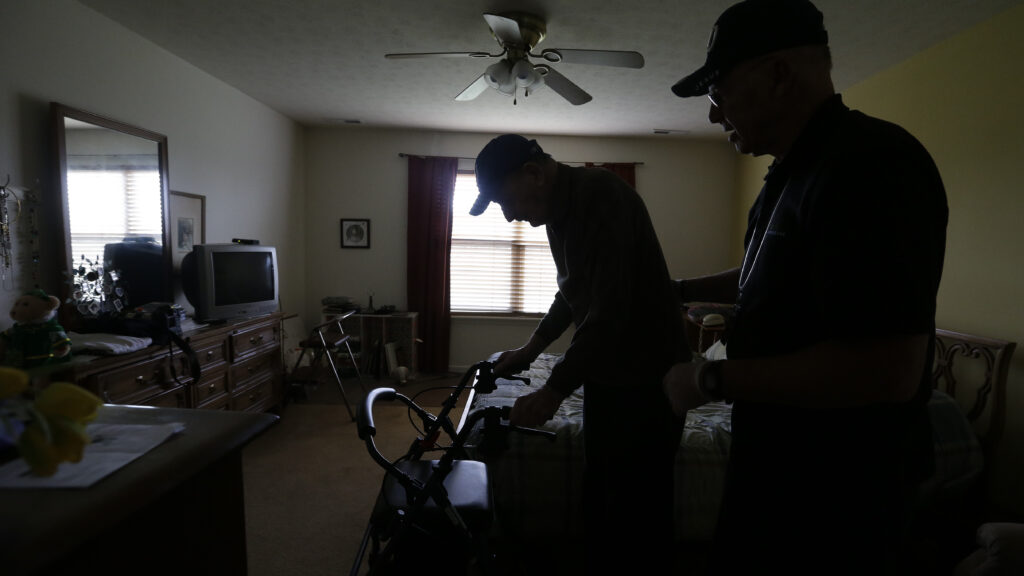Health
New Medicaid rule could shorten wait times for home care

cGivers for the elderly and people with disabilities could see an increase in their wages in the coming years, thanks to a upcoming rule by the Centers for Medicare and Medicaid Services.
The new rule brings sweeping changes to many Medicaid programs across the country, including fee-for-service systems and managed care delivery systems. One of the most notable changes concerns the home and community services sector (HCBS). CMS will now require home health providers to use 80% of the Medicaid reimbursements they receive for caregiver compensation.
The rule changes were prompted in part by a labor shortage that led to long wait times for home care services 700,000 Americans languish on waiting lists every year since 2016 by one estimate. The Covid-19 pandemic, the rising costs of home care and rising wages in other industries have eroded the direct support workforce, including home and personal care assistants who help people with daily tasks. Nearly 80% of providers reported turning away new referrals in the past year due to ongoing staffing shortages. This is evident from a recent report by ANCOR, a nonprofit organization dedicated to improving the quality of life for people with intellectual and developmental disabilities. CMS hopes this new rule will stabilize the industry and help healthcare providers, many of whom are immigrants and people of color.
“This rule should ensure that older adults and people with disabilities who need assistance with activities of daily living can receive quality support and that they and their caregivers are treated with dignity,” said Natalie Kean, director of federal health care for the non-profit organization. Justice in aging.
More than seven million seniors and people with disabilities rely on home and community-based services, according to a fact sheet released by the White House last week. Disability activists have long sought to keep these people in communities rather than institutions. This new regulation on how Medicaid payments to health care providers are structured is part of this broader shift towards home care over institutional care.
“We hope this will increase access to critical HCBS services that allow people with disabilities to live in their own communities while improving historic inequities in how these workers are paid,” said Jennifer Lav, senior attorney at the National Health Law Program, in a statement. .
However, the new rule has received resistance from providers. When CMS proposed for the first time Last year, the agency received a flood of comments decrying the 80% mandate, suggesting it would effectively put providers out of business and that 20% of payments would not cover providers’ overhead or other costs. Providers also said the ruling “too complex to implement‘ and that CMS lacked data supporting the 80% mandate. After the agency released the final version last week, the National Association for Home Care & Hospice blasted the rule, calling the policy “misguided” and “devastating.”
“We all agree that more needs to be done to support direct care staff; however, these policies will make things worse, not better,” said NAHC President William Dombi in a statement.
Lydia Dawson, vice president for government relations at ANCOR, is pleased that CMS is addressing staffing shortages, but she is skeptical that the changes will fully address the sector’s workforce issues. She said Medicaid reimbursement rates need to increase and that changing the formula for health care provider wages only risks the financial hot potato providers already under pressure.
“Without adequate funding in the system to attract and retain direct support staff, we’re already seeing these pretty extreme impacts on supplier availability,” Dawson said.
Providers have up to six years to demonstrate compliance with the new rules, and states have the option to offer “hardship exemptions” and give small providers a lower threshold than the 80% mandate. Senators interviewed Daniel Tsai, the deputy administrator and director of the Center for Medicaid and CHIP services at CMS, during a Senate Energy and Commerce Committee hearing Tuesday and suggested that these rates were unfair to providers. But Tsai continued to insist the rule would save lives.
“[These rules] will change the way tens of millions of Americans receive care for the better,” he said during a press conference a week earlier. “I was just getting on with it [a call] with stakeholders earlier, and one described the set of rules here as “disrupting the complacency that too many of us have accepted for too long for the Medicaid program.” And I think that’s exactly what these rules do.”













